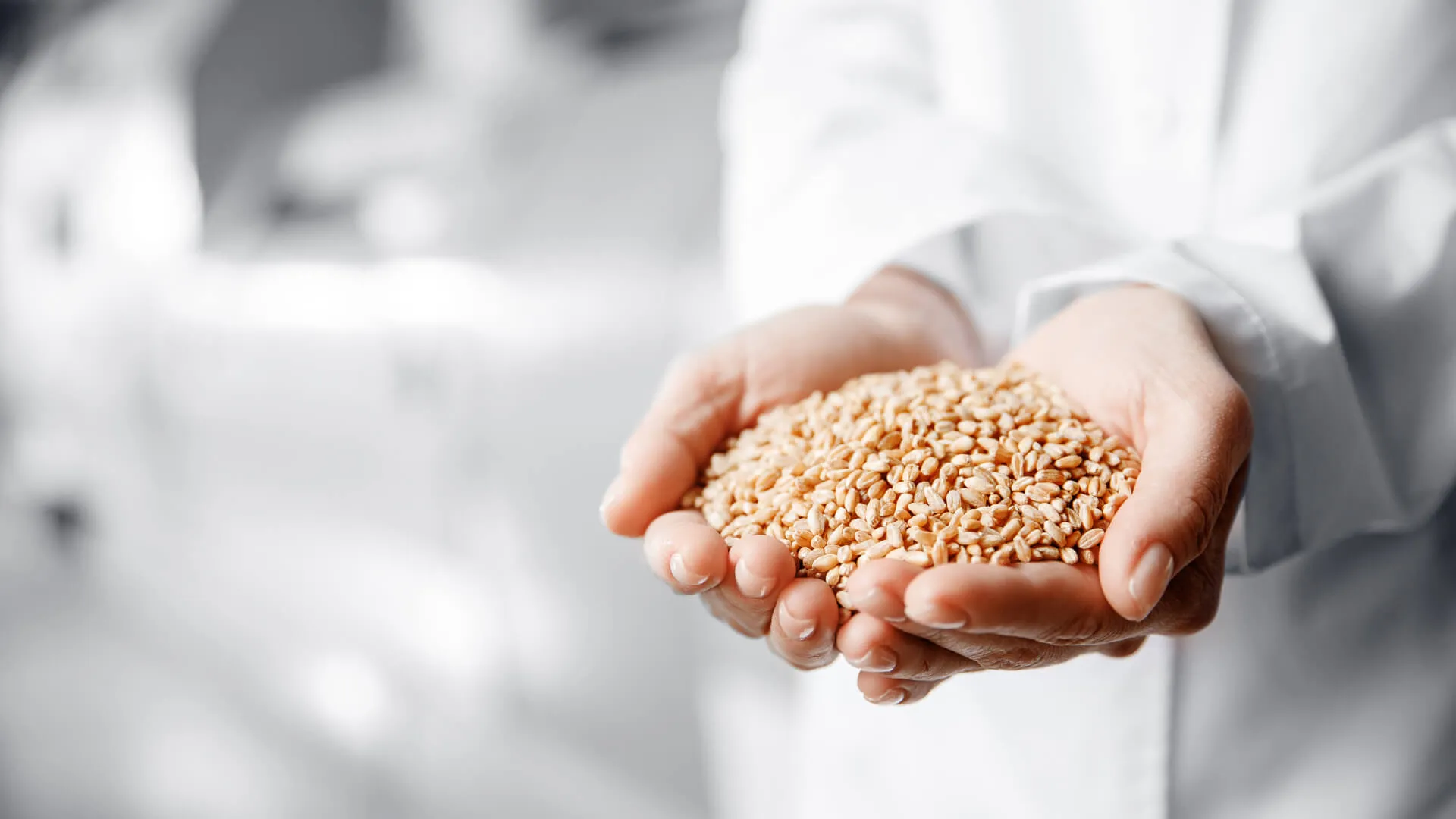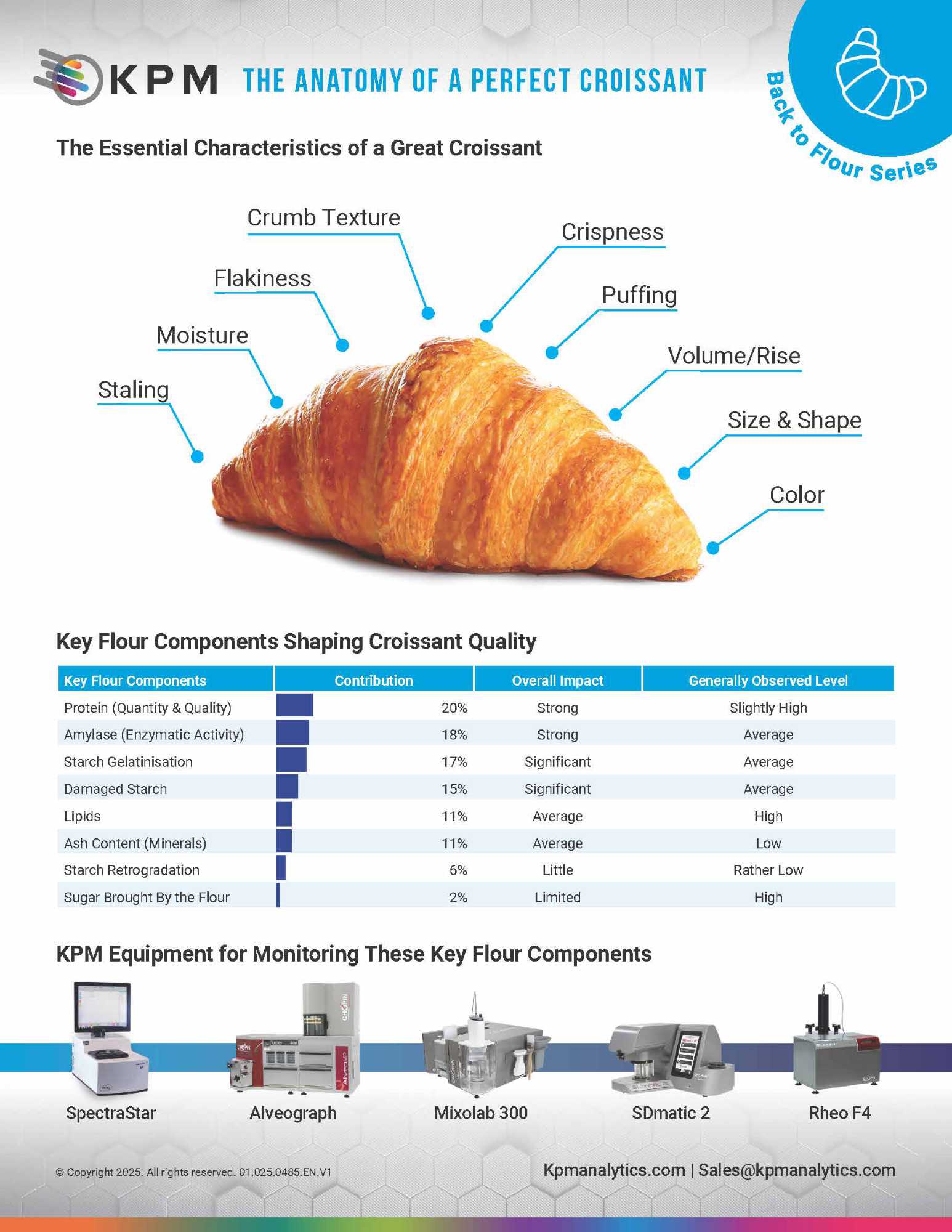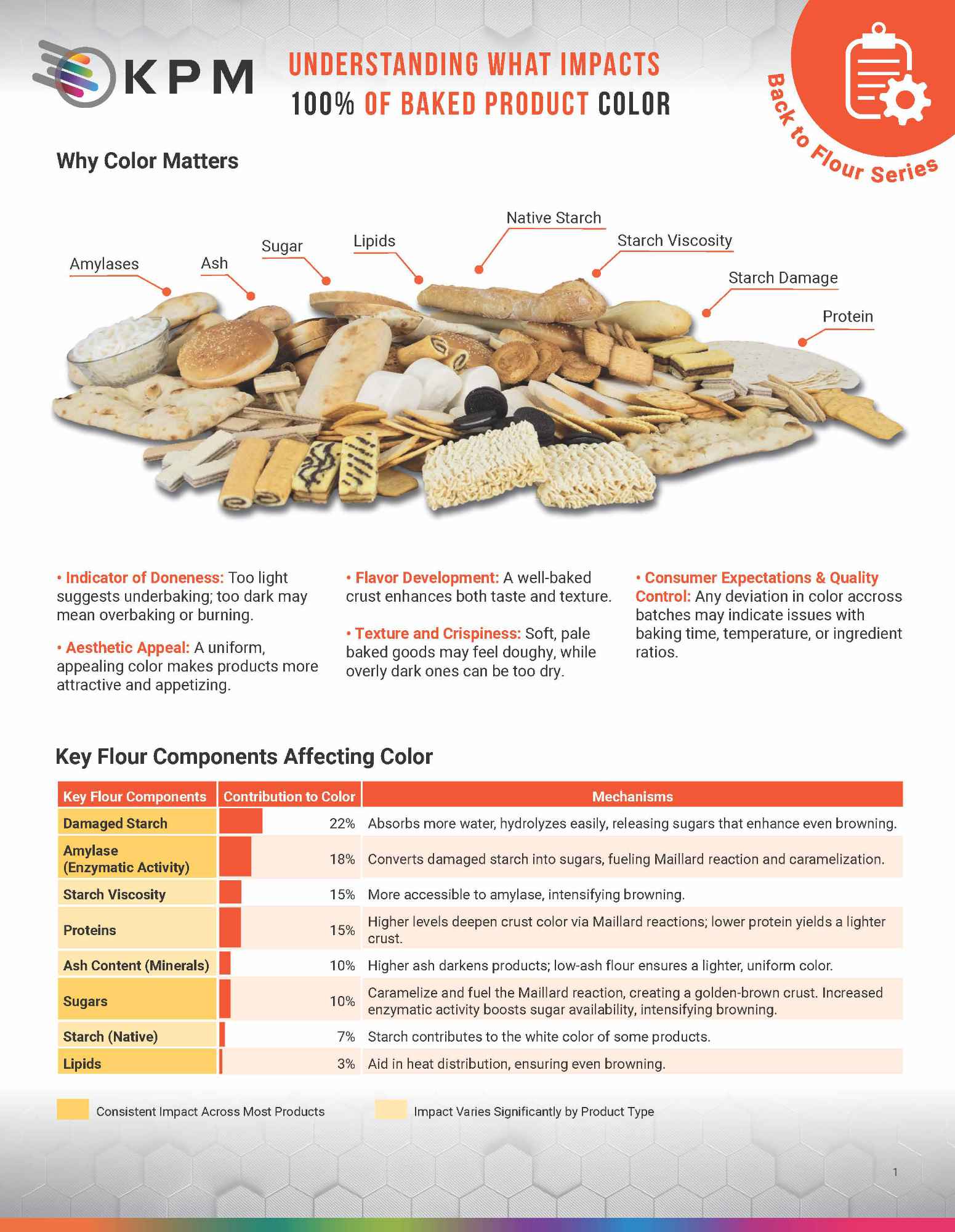Back to Flour The Anatomy of a Perfect Sponge Cake

Sponge cake quality depends on achieving a delicate balance between lightness, texture, and stability. Its ideal characteristics include even color, smooth surface, fine and elastic crumb texture, balanced moisture, and gentle springiness. Each of these attributes reflects how the flour components interact during mixing and baking.
This document identifies the main flour components contributing to sponge cake performance. Damaged starch and proteins have the strongest influence, shaping structure, volume, and crumb. Starch gelatinisation and enzymatic activity also play a significant role, while ash content and lipids contribute moderately. Sugars naturally present in flour and starch retrogradation have a more limited effect but still influence texture and freshness over time.
By connecting these measurable flour factors to product outcomes, this resource helps bakers and millers achieve consistent results and maintain the delicate balance that defines a perfect sponge cake.
This document is part of the Back to Flour Series, an educational program that connects flour science to bakery product characteristics.



